While do-it-yourself projects can be fun and fulfilling, there is always a potential for personal injury or property damage. We strongly suggest that any project beyond your abilities be left to licensed professionals such as electricians, plumbers, and carpenters. Any action you take upon the information on this website is strictly at your own risk, and we assume no responsibility or liability for the contents of this article.
How to Tile a Tub or Shower Surround
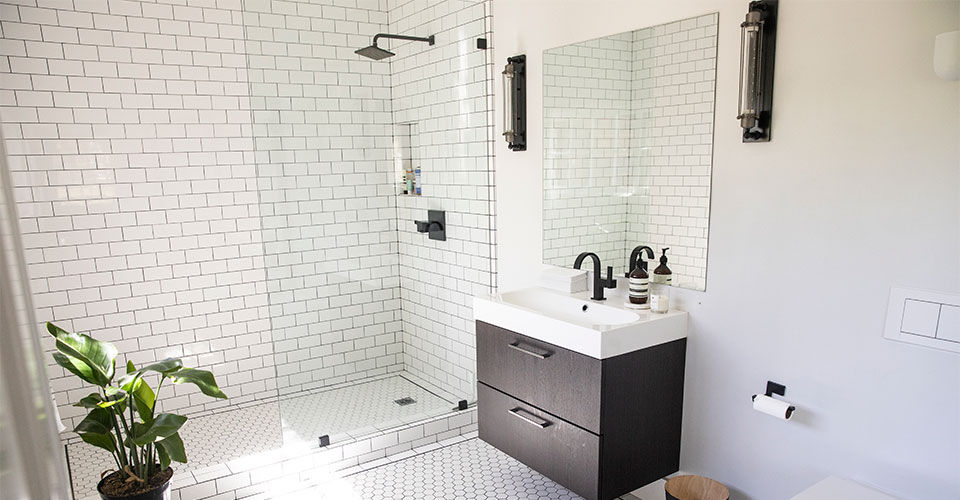
Tiled tubs and showers don’t just look great — they’re also easy to clean and tend to last for years with minimal maintenance. Whether you’re trying to finish a new bathroom or replace an old acrylic surround, you don’t need a lot of experience to start a DIY tiling project for a tub or shower. Just follow this handy guide and take your time.
Choose a Tile and Measure Accurately
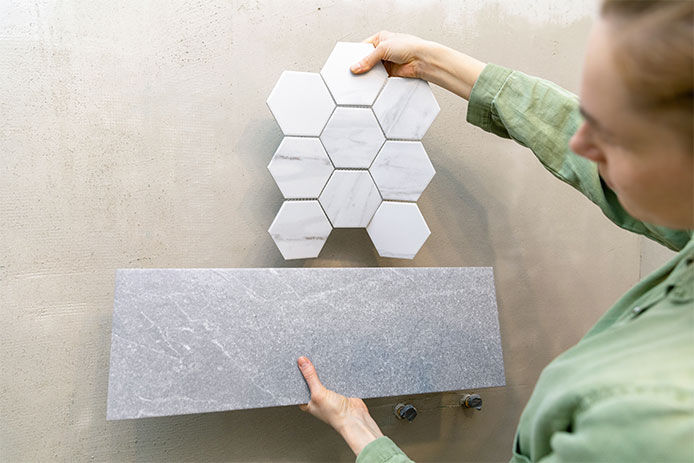
Regardless of the product you choose, the basic steps for installing tiles are the same. The amount of time it takes to complete the process, however, depends a lot on the tile. Tiny tiles look great — especially artistic octagons or interlocking shapes — but they also add a lot of extra time and work to a project. If you must have a tiny pebble or subway tile, look for pre-assembled sheets that allow you to hang a square foot of the pieces all at once. These are called tile sheets, and they make it much easier to accomplish an attractive penny or mosaic tile installation. Make sure to get accurate measurements of all the wall and floor you plan to cover, as they’ll determine the specifications of order materials like tile and backer board.
Install the Right Backer Board
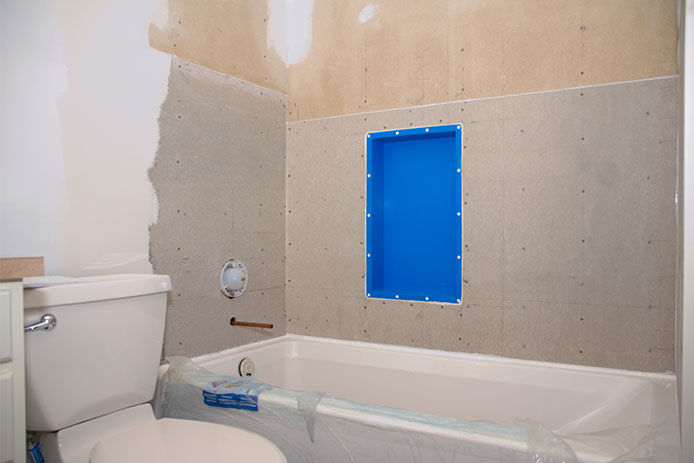
Unless there’s already a stable and tightly seamed layer of tile backer board under your existing surround, you’ll need to install it. Backer board should be screwed into the studs behind the walls and the joists of the floor, so unless you’re working with new construction, you’ll need a stud finder. Choose a waterproof backer board — better known as green board — to avoid the need to install a layer of felt. Make sure the backer board and the tile covering it extends above any showerheads by at least 6 inches to prevent splash back. If you’re only surrounding a tub, going 12 inches above the lip is enough. Leave ¼-inch gaps between the pieces of backer board and the tub or shower edges. Fill these gaps with fiberglass mesh tape and then thin layers of thinset mortar. Use tub and shower caulk to close the gap between the backer board and the tub or shower edge.
Add a Layer of Mortar
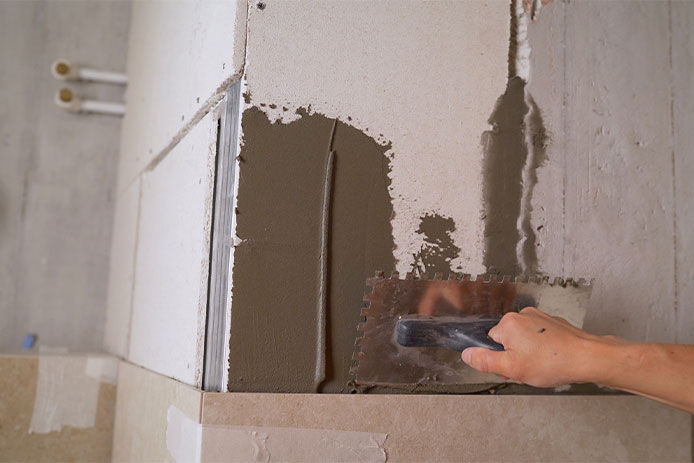
It’s possible to apply tile mastic directly over tile backer board or felt paper and get relatively good adhesion. If you want your tiles to really stick, especially if they’re heavier or larger, try applying a skim coat of thinset mortar over the entire backer board surface. Let this mortar dry completely before applying any mastics or the mortar intended to adhere the tile. Think of this layer as surface primer that ensures a stronger bond between the board and tile. It’s not necessary unless you’ve had to improvise and use a waterproof board or barrier that isn’t designed for direct tile adhesion.
Set the Tile From the Middle Outward
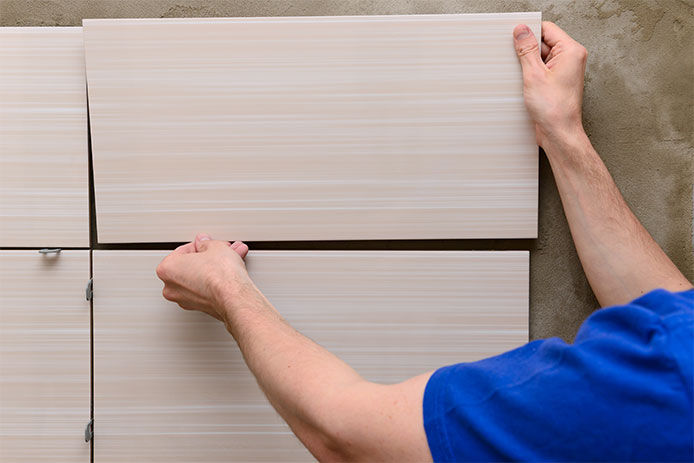
Once the backer board is installed, sealed at the corners, and — if desired — skimmed, it’s time to mark out the main grout lines. Use a chalk line, level, and measuring tape to make accurate marks. These are lines centered vertically and horizontally on each wall or floor section. By laying tile along these lines and then working outward to the edges, you’ll get an even and attractive pattern that looks visually centered. Before beginning to set the tile, check where the centered lines leave the edge widths, based on the size of the tile. You may want to set these off by a few inches to leave more tile at the bottom or top. Cutting and installing slivers of tile is tedious and tends to waste a lot of material. It’s always better to change the pattern of installation than to try and stay centered at the cost of having just an inch of tile to install at the edges.
When setting the tile, pick a small area to work on at once and apply a thin and ridged layer of tile mastic or thinset mortar. Tile mastic is stickier and has a better immediate grip, so it’s recommended for heavy and large tiles. Don’t apply more mastic or mortar than you can cover in a few minutes, as it will set up and leave tiles loosely attached. Set the back wall first and then work around to the sides, skipping any areas where tiles need to be cut or drilled to fit along edges and around fixtures. Scrape and wipe off any mortar or mastic applied to these areas so that they’re ready for reapplication in the next step.
Cut Tiles With Care
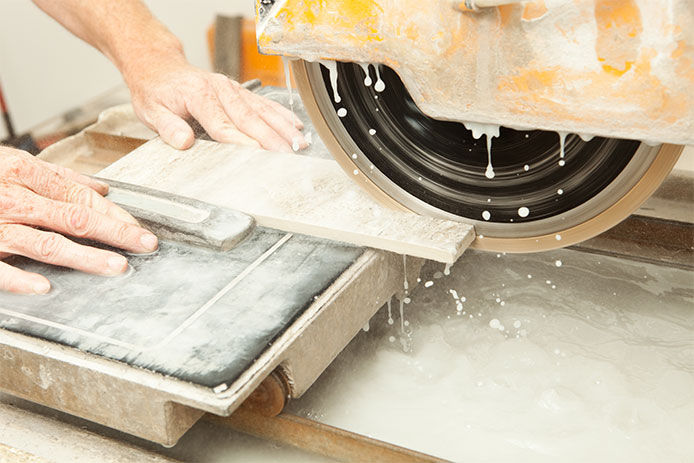
After the main tiles are in place, it’s time for the tricky work of cutting all those edge and fixture pieces. Your measurements and planning should have you cutting tiles in half. This is best done with a wet saw to control dust and get a finer edge. Rent one if you don’t plan to do much tile work in the future. For tiles that need holes or irregular shapes at the edges to fit around a fixture, try diamond-coated hole saws that attach to power drills or good old-fashioned tile snips. This step often produces a large pile of broken or misshapen tiles, as it’s hard to get a perfect cut or hole without shattering the material. Glass and thin ceramic are particularly tricky to cut. Buy plenty of extra tiles to ensure you don’t run out or face a shortage in stock from the manufacturer when your tiling project is 90% done. Clean up any mortar or mastic that squeezes through the gaps between tiles while it’s still wet to make it easier to grout later.
Grout the Tile
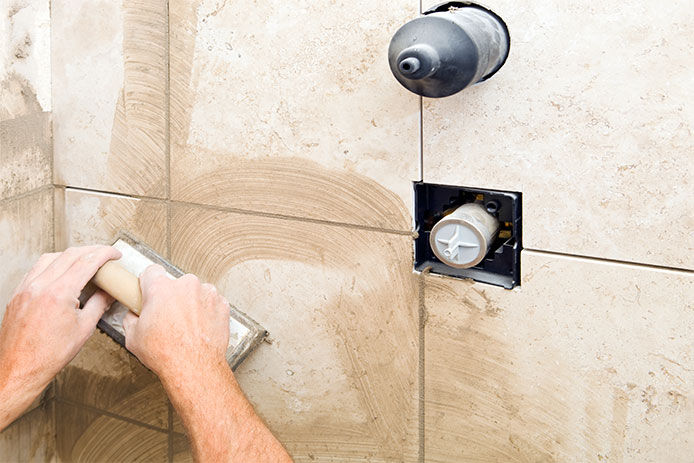
Once you’ve managed to fit in all the odds and ends around the edges of your tile work, you’re nearly done. If you cleaned up your grout lines while setting the tile, you should only need to spread the grout over the entire surface of the tile for good coverage. Grout lines clogged with mortar or adhesive may need to be cleaned with a putty knife first. Use a damp sponge to tell when the grout is dry. When the sponge’s surface doesn’t lift grout from the lines anymore, it’s time to rinse and scrub off the tiles and enjoy your new shower. All that’s left is one last line of caulk wherever the last runs of tile meet up with the tub and shower materials.
While setting tile around your tub or shower can be challenging if it’s your first time, you’ll feel much more comfortable with the process after doing it once or twice. Try a small test project like a kitchen or bathroom sink backsplash to get your feet wet first.